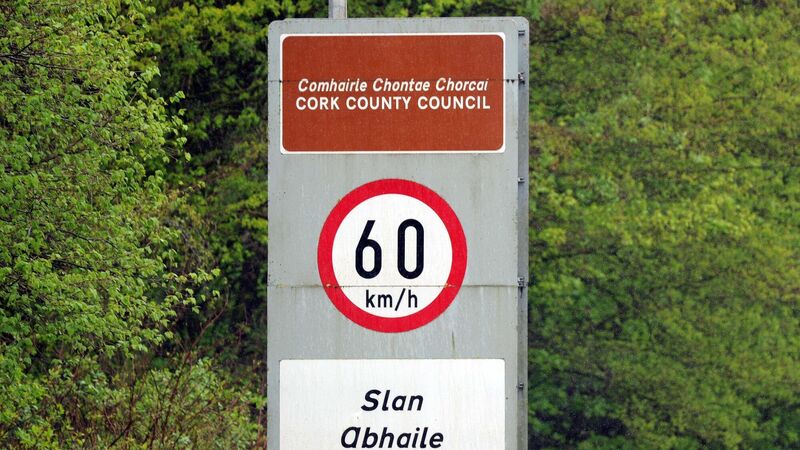Speed limits reduced on Cork roads from today

From today, under the Road Traffic Act 2024, local rural roads which have a default speed limit of 80km/h, will have their speed limits reduced to 60km/h.
Speed limits on local rural roads across Cork will change from today, with further reductions for secondary national roads and urban centres to come later this year.
From today, under the Road Traffic Act 2024, local rural roads which have a default speed limit of 80km/h, will have their speed limits reduced to 60km/h.
These roads primarily serve local traffic and provide access to homes, farms, and small rural communities.
To reflect this change, new signage will be erected along impacted routes.
The working group for the speed limit review comprised the Department of Transport, Road Safety Authority (RSA), An Garda Síochána, Transport Infrastructure Ireland, the National Transport Authority, and the County and City Management Association.
Speaking to The Echo, Gillian Synott, An Garda Síochána Cork City Roads Policing Inspector, said that while changes will be made to speed limits, there will be no changes made to the penalties received by drivers for speeding.
“From [today] we have the new speed limits coming into play and the bylaws will be enacted on that day [too].
“There’ll be new road signage put up to notify people of where these limits have been reduced.
“Members of the Roads Policing Unit will be out enforcing these speed limits, [so] we’re asking people to pay attention to these road signs, to be aware that the speeds have changed and to slow down.
“It’s about having safer roads [and] safer communities — it’ll certainly make the roads safer for everybody.
“The fine [for speeding] is still the same, and the penalty points are still the same even though the limits are reducing, [but] the GoSafe vans will be out in places where those speeds have been changed.”
Further measures will also be introduced later this year, which will see the speed limit in urban centres, including housing estates and town centres, reduce from 50km/h to 30km/h, and the speed limit on national secondary roads reduce from 100km/h to 80km/h.
A spokesperson for the RSA said that the changes come as managing speed is one of the “most effective” ways to reduce fatalities and serious injuries from road traffic collisions.
“Setting speed limits that are appropriate for the type of road and their use is a cornerstone of the Safe System approach,” the spokesperson said.
“This is an internationally recognised, best practice approach to achieving ambitious reductions in road user fatalities and serious injuries.
“Speed significantly increases both the likelihood and severity of road crashes, [so] reducing speed limits can lower the risk of collisions and the extent of injuries when crashes do occur,” they added.
“Lower speeds provide drivers with more time to react to unexpected situations, thereby preventing collisions.
“The energy and force involved in crashes increases exponentially with speed, thus, even a small increase in speed magnifies the severity of injuries to the human body.”
The spokesperson added that local authorities have discretion to make changes to the default speeds set out by legislation, by setting ‘special speed limits’ for given roads in their areas, which is done as part of a statutory consultation process.
“Recent legislation has not changed this structure, or affected the capacity of local authorities to vary special speed limits,” the spokesperson said.
Meanwhile, a spokesperson for the Department of Transport said that the reductions come as part of Ireland’s Government Road Safety Strategy 2021–2030, which has the primary aim of reducing the number of deaths and serious injuries on Irish roads by 50% by 2030.
“Speeding is a leading contributor to road fatalities, not just driving in excess of the posted speed limit but driving at a speed which is inappropriate for the prevailing road and weather conditions, conditions of the vehicle or experience of the driver,” the spokesperson said.
“The higher the speed; the greater the impact; the more serious the outcome.”







 App?
App?


